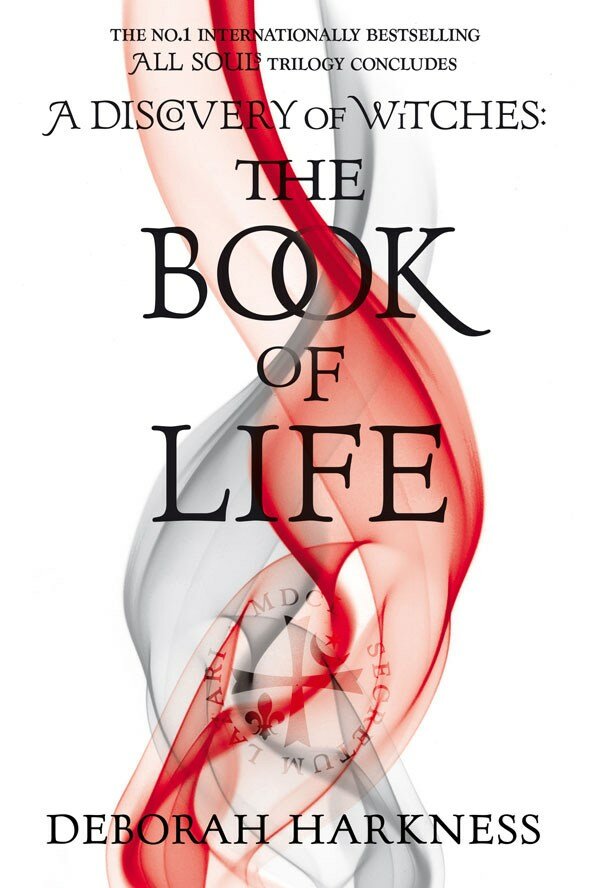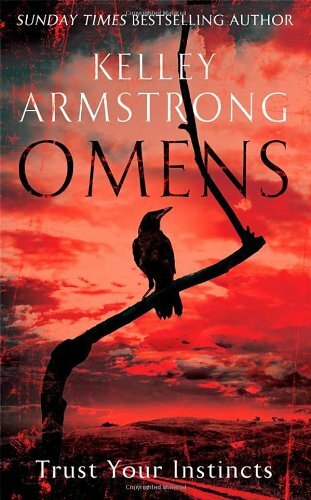Guest post: My top 10 witches and vampires in literature by Marie Anne Cope
6 May
Today I’m delighted to welcome Marie Anne Cope to One More Page to share with us her favourite witches and vampires in literature. Marie lives in Wrexham and is also a yoga teacher. She will be appearing at Wrexham Carnival of Words tomorrow, 7th May. Bonds is Marie Anne Cope’s debut novel, the first of four novels centered around the powerful relationship between Becca Martin and Anthony Cardover. She has also written a short story collection, Tales from a Scarygirl. Welcome Marie Anne!
 Witches and vampires, the subject of my debut novel Bonds, are a constant source of fear, fascination and wonder.
Witches and vampires, the subject of my debut novel Bonds, are a constant source of fear, fascination and wonder.
They are elusive, endearing, engaging and enigmatic. But, at the same time, they are also dangerous, destructive, deadly and devious. They seduce you, they draw you in, they overpower you, they take over your mind, they take away your willpower, and you let them.
So, with this in mind, here are a few of my favourite witches and vampires in literature, starting with the spell-casters themselves.
Circe the Greek goddess of magic from the Odyssey by Homer
Some say Circe is the ultimate witch and certainly a sorceress to be reckoned with. She is self-sufficient, sexually alluring and expert in the areas of potions and herbs.
She also wields a wooden staff, which she famously uses to transform whomever she wishes into an animal, usually a pig. This emasculating tendency is rumoured to be payback for a broken heart.
The Weird Sisters from Macbeth by William Shakespeare
‘Double, double, toil and trouble; Fire burn and cauldron bubble’
The eerie repetition of this line, in the opening scene of the Scottish Play, sends a shiver down your spine and is, arguably, the first thing that pops into your head when you think about witches.
Fear them, because if they can convince battle-hardened and ambitious Macbeth to do what they want, think what they could do to you!
The Witches of Oz from The Wonderful Wizard of Oz by Frank L Baum
Although there are four witches in Baum’s classic story, it is Elphaba, the Wicked Witch of the West, whom everyone remembers.
In contrast to her green skinned, broomstick riding silver screen persona, Baum’s Elphaba (pictured) has a single all-seeing eye, carries an umbrella and makes it her mission to avoid water.
Despite her weakness, she still manages to inspire fear and wreak havoc before her watery demise.
The White Witch, Jadis from The Lion The Witch and the Wardrobe by C. S. Lewis
With Jadis, C.S. Lewis takes witches back to their position of villainy.
With her disarming beauty, charm and sorcerous power, she epitomises the terrifying evil witch. Match this with her tendency to turn those who displease her to stone and Jadis stands out in the literary world of witches.
Beware – do not be fooled by a person’s beauty, as it may only be skin deep.
Hermione Grainger from the Harry Potter Series by J. K. Rowling
Last, but by no means least, we come to Hermione Granger, ‘the brightest witch of her time’. With Hermione, Rowling redeemed the witch and erased the negative historical implications and gender bias.
Nothing phases Hermione, except the possibility of getting expelled for breaking the rules. She is courageous, gifted, kind, witty and always prepared.
Now, it is the turn of the enigma that is the vampire.
Lord Ruthven from The Vampyre by John Polidori
The first and, arguably, most influential of modern vampires is Lord Ruthven, the archetype of the ruthless, charismatic and sophisticated vampire. Polidori is said to have based Ruthven on his pale, languid and over-sexed patient, Lord Byron.
Polidori’s creation remains timeless and has spawned countless more, all sired in Ruthven’s image, as is the vampire way.
Varney the Vampire by James Malcolm Rymer
Originally a penny dreadful, totalling over 1,000 pages, Varney the Vampire was the first vampire novel published in the UK.
It is based on the adventures of aristocrat, Sir Frederick Varney, a hapless vampire who is usually exposed as such before he has chance to make his kill.
The tales are cheap, lurid and melodramatic, but the Victorians loved them.
Carmilla by J. Sheridan Le Fanu
Carmilla is said to be the most interesting of all vampires, possessing the ability to shape shift and feed on her victims in her black cat persona.
Although known for the savageness of her attacks, her technique changes when she finds Laura, to one of seduction, as the first ever female vampire falls hopelessly in love.
Dracula by Bram Stoker
With Dracula, Stoker took a ruthless and bloodthirsty historic persona – Vlad the Impaler (pictured) – and incorporated him into a character and a novel whose themes of demonic possession combined, with undertones of sex, blood and death, struck a chord with the Victorians and defined the most influential vampire in popular fiction.
For me though, Dracula is, without compare, THE best love story ever written.
Lestat from The Vampire Chronicles by Anne Rice
Lestat is a complex character. Whilst endearing and charming, he is selfish and quickly bored. If you spark his interest, you will be spoiled. If you don’t…..
In Interview with a Vampire, he is shown in all his selfish and monstrous glory, yet in The Vampire Lestat, we see a fun loving, altruistic and, in the end, heroic side to him.
Lestat epitomises the alluring yet dangerous dual nature of the vampire.
Thank you Marie Anne – what a fab list!
 Bonds is out now in paperback and ebook formats.
Bonds is out now in paperback and ebook formats.
Half the village of Breccan lies dead – slaughtered. All that stands between Antony Cardover and his freedom is his wife, Isabella, or so he believes. In his wrath at his wife’s adultery, Antony trades his soul for the chance of vengeance. His price? An eternity as a monster – a man bearing a vampire curse. To stop him, the curse must be broken. To break the curse, Isabella and all her descendants must be destroyed. The catch? Only Antony can break the curse.
With Breccan in mourning and Antony on the rampage, only one person can help. Anna Martindale, a witch shunned by the villagers, entombs Antony within a stone sarcophagus, bound by spells and buried in hallowed ground for the rest of time. Breccan breathes again. Time heals. That was four hundred years ago. Seventeenth century spells, however, are no match for twenty first century living. As Ramply Homes moves in, the secret of St Martin’s churchyard prepares to move out.
As the church is desecrated, the spells that hold Antony break. Soon, Becca Martin, a descendant of Isabella, is plagued by dreams of a time and a man she cannot possibly have known. As her nightmares become real, Becca has no choice but to contact the one person who will be able to help; someone she has not spoken to in a decade – her mother. Here, Becca discovers the truth about her ancestry and is forced to face up to whom and what she is. Only a wooden box and her gift hold the key to her survival. Four hundred years ago Antony failed. He will not fail again.

 Head Over Heels (Geek Girl Book 5) by Holly Smale (HarperCollins Children’s Books) April 7th
Head Over Heels (Geek Girl Book 5) by Holly Smale (HarperCollins Children’s Books) April 7th
 Passenger by Alexandra Bracken (Quercus Children’s Books) 7th April.
Passenger by Alexandra Bracken (Quercus Children’s Books) 7th April. 
 These Days of Ours by Juliet Ashton (Simon and Schuster) April 7th
These Days of Ours by Juliet Ashton (Simon and Schuster) April 7th
 The Obsession by Nora Roberts (Piatkus) April 14th
The Obsession by Nora Roberts (Piatkus) April 14th
 The Nurses of Steeple Street by Donna Douglas (Arrow) April 21st
The Nurses of Steeple Street by Donna Douglas (Arrow) April 21st
 Carlie McEwan loves many things. She loves being a witch. She loves her town of Halfway, NY—a tourist destination nestled on the shores of an Adirondack lake. Carlie loves her enormous familiar, Gus, who is twenty-five pounds of judgmental Maine Coon cat, and she positively worships her Grandmother, a witch of incredible power and wisdom. Carlie spends her days cooking at the finest—and only—real diner in town, and her life is a balance between magic and the mundane, just as she likes it. When a blonde stranger sits at the diner counter and calls her by name, that balance is gone. Major Pickford asks Carlie to lead him into the deepest shadows of the forest to find a mythical circle of chestnut trees, thought lost to forever to mankind. There are ghosts in the forest, and one of them cries out to Carlie across the years. Come find me. Danger, like the shadowed pools of the forest, can run deep. The danger is real, but Carlie’s magic is born of a pure spirit. With the help of Gus, and Gran, and a rugged cop who really does want to save the world, she’ll fight to bring a ghost home, and deliver justice to a murderer who hides in the cool, mysterious green of a forest gone mad with magic.
Carlie McEwan loves many things. She loves being a witch. She loves her town of Halfway, NY—a tourist destination nestled on the shores of an Adirondack lake. Carlie loves her enormous familiar, Gus, who is twenty-five pounds of judgmental Maine Coon cat, and she positively worships her Grandmother, a witch of incredible power and wisdom. Carlie spends her days cooking at the finest—and only—real diner in town, and her life is a balance between magic and the mundane, just as she likes it. When a blonde stranger sits at the diner counter and calls her by name, that balance is gone. Major Pickford asks Carlie to lead him into the deepest shadows of the forest to find a mythical circle of chestnut trees, thought lost to forever to mankind. There are ghosts in the forest, and one of them cries out to Carlie across the years. Come find me. Danger, like the shadowed pools of the forest, can run deep. The danger is real, but Carlie’s magic is born of a pure spirit. With the help of Gus, and Gran, and a rugged cop who really does want to save the world, she’ll fight to bring a ghost home, and deliver justice to a murderer who hides in the cool, mysterious green of a forest gone mad with magic. The second book in The Otherworlders series has just been released. Please could you tell us a little about it.
The second book in The Otherworlders series has just been released. Please could you tell us a little about it. Giveaway!
Giveaway! When I first read Bram Stoker’s Dracula, it fired my imagination more than any other book ever had before. I was only fourteen and I truly, had never read anything like it. I’d read Wuthering Heights at school of course, loved Heathcliff – hated Cathy – but Dracula really was something else. From that moment on, I read anything I could find with vampires in. From Sheridan Le Fanu’s Carmilla, and Polidori’s The Vampyre, I then graduated to Anne Rice’s Vampire Chronicles, and I loved Lestat of course. (Not Tom Cruise’s version!)
When I first read Bram Stoker’s Dracula, it fired my imagination more than any other book ever had before. I was only fourteen and I truly, had never read anything like it. I’d read Wuthering Heights at school of course, loved Heathcliff – hated Cathy – but Dracula really was something else. From that moment on, I read anything I could find with vampires in. From Sheridan Le Fanu’s Carmilla, and Polidori’s The Vampyre, I then graduated to Anne Rice’s Vampire Chronicles, and I loved Lestat of course. (Not Tom Cruise’s version!)




 ebook)
ebook) The Lost Boys by Lilian Carmine (Ebury – out now in paperback and ebook)
The Lost Boys by Lilian Carmine (Ebury – out now in paperback and ebook)
 Dark Witch (Book 1 in the Cousins O’Dwyer Trilogy) by Nora Roberts (Piatkus, 31st October)
Dark Witch (Book 1 in the Cousins O’Dwyer Trilogy) by Nora Roberts (Piatkus, 31st October) On the evening of Sofia Claremont’s seventeenth birthday, she is sucked into a nightmare from which she cannot wake. A quiet evening walk along a beach brings her face to face with a dangerous pale creature that craves much more than her blood. She is kidnapped to an island where the sun is eternally forbidden to shine. An island uncharted by any map and ruled by the most powerful vampire coven on the planet. She wakes here as a slave, a captive in chains. Sofia’s life takes a thrilling and terrifying turn when she is the one selected out of hundreds of girls to join the harem of Derek Novak, the dark royal Prince. Despite his addiction to power and obsessive thirst for her blood, Sofia soon realizes that the safest place on the island is within his quarters, and she must do all within her power to win him over if she is to survive even one more night. Will she succeed? …or is she destined to the same fate that all other girls have met at the hands of the Novaks?
On the evening of Sofia Claremont’s seventeenth birthday, she is sucked into a nightmare from which she cannot wake. A quiet evening walk along a beach brings her face to face with a dangerous pale creature that craves much more than her blood. She is kidnapped to an island where the sun is eternally forbidden to shine. An island uncharted by any map and ruled by the most powerful vampire coven on the planet. She wakes here as a slave, a captive in chains. Sofia’s life takes a thrilling and terrifying turn when she is the one selected out of hundreds of girls to join the harem of Derek Novak, the dark royal Prince. Despite his addiction to power and obsessive thirst for her blood, Sofia soon realizes that the safest place on the island is within his quarters, and she must do all within her power to win him over if she is to survive even one more night. Will she succeed? …or is she destined to the same fate that all other girls have met at the hands of the Novaks?

 I will protect you until the day I die … forever!
I will protect you until the day I die … forever!




Follow One More Page